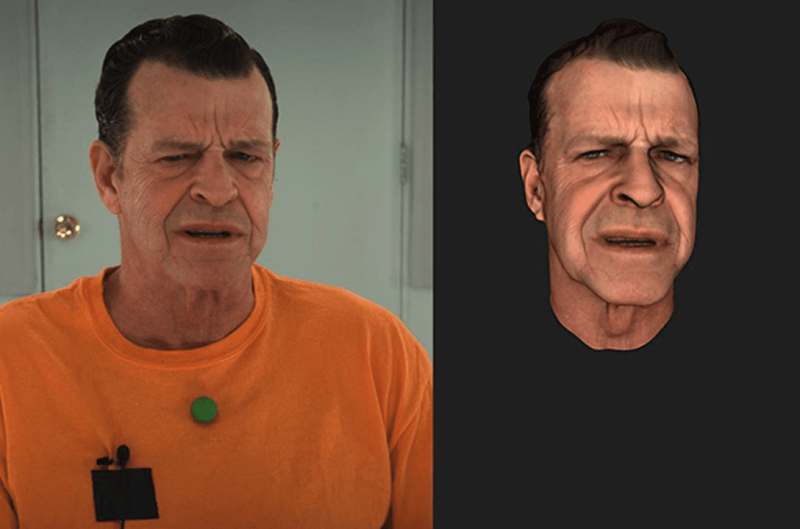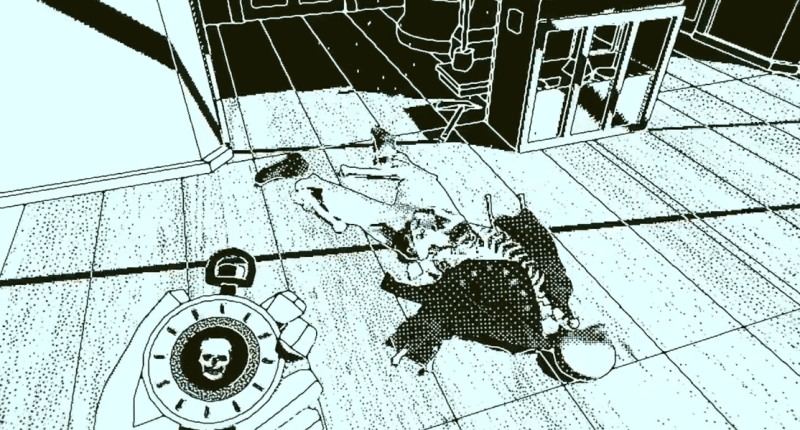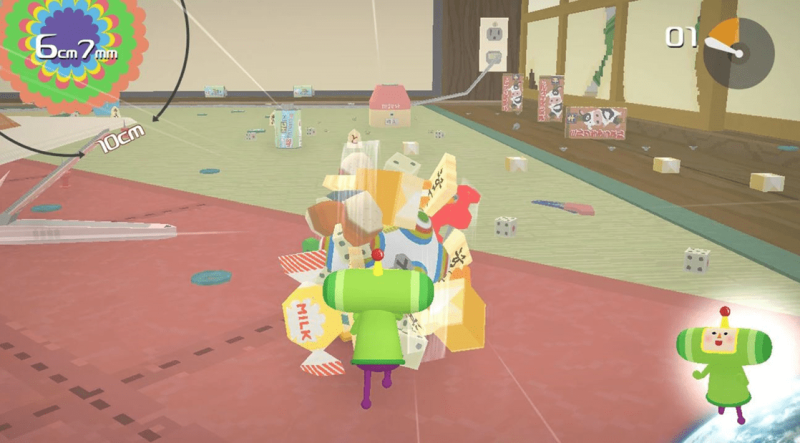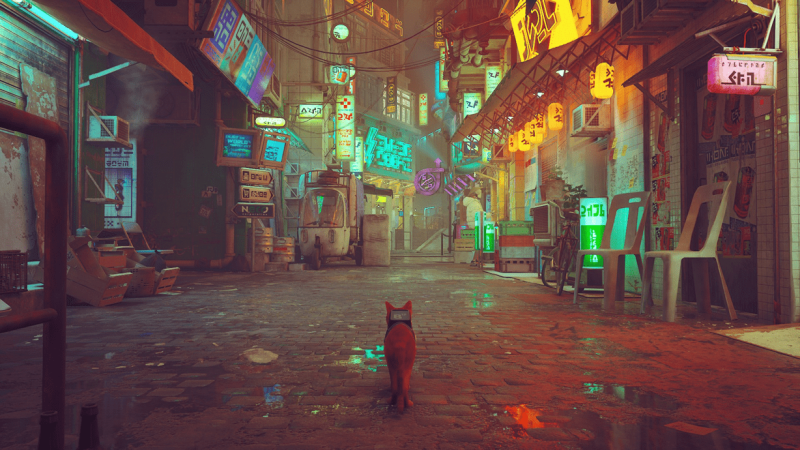Violence has been a recurring topic in video games for decades, with concerned parents and authorities alike accusing the industry of corrupting young minds and promoting aggressive behavior. But is there really a cause for alarm? The legendary writer Cormac McCarthy seems to think otherwise, arguing that the seed of violence has been inside us since the dawn of time. I happen to subscribe to that idea.
Personally, I find the debate around violence in video games to be uninteresting. What really concerns me is the lack of creativity in some of the biggest and most popular titles. Why do so many AAA games rely on violent gameplay to hook players? Isn’t it time to explore different avenues and push the boundaries of game design?
It’s no secret that conflict is at the heart of any engaging story. But movies, TV shows, and books have the luxury of exploring a much wider range of conflicts than the typical “kill or be killed” scenario found in most video games. They can delve into the intricacies of family relationships, the complexities of the human psyche, and the struggles between different ideologies.
That’s why I believe game developers should start thinking outside the box and explore new storytelling methods that go beyond the tired trope of violence. After all, there are endless possibilities out there waiting to be explored.
Violence in Video Games
Gaming’s interactive nature has been both its biggest asset and its Achilles heel. While gameplay requires the player to always be engaged, it also prevents games from delving into more complex, nuanced conflicts. Even when developers aim to create more depth, it often results in nothing more than an interactive movie, with in-game actions regressing to mindless violence.
Take Naughty Dog‘s Uncharted 4, for example. Despite wanting to make Nathan Drake a likable character, his in-game actions made him come across as a bloodthirsty maniac. The studio even contemplated making the first half of the game melee only to prove Drake could change his ways, but this idea was scrapped. Simply put, guns and flashy action are difficult to remove from a game without affecting its appeal.
As Mark Brown pointed out in his video “Can We Make Talking as Much Fun as Shooting?”, non-violent alternatives to combat can be underwhelming. Many RPGs promise players they can avoid fighting altogether by building up “Charisma” and “Intelligence” stats, allowing them to charm themselves out of any situation. But the reality is often far less exciting than advertised.
Read Also: Navigating the Realms of Violence in Video Games
Examples of Violence in Video Games
In the world of video games, combat and violence in video gamestend to rule supreme. The reason for this is simple: it’s challenging to make any other action as engaging and interesting as fighting. One example of this is the “Chavez” mission in Fallout New Vegas. You can choose to kill Chavez and his crew, which involves active gameplay and risk of failure, or you can convince him to disappear using the speech attribute, which is as simple as pressing a button.

While the speech option might seem like a great way to respect a player’s freedom of choice, it’s not nearly as engaging as combat. This is precisely why many games still rely heavily on combat mechanics. Even games that have attempted to make dialogue options more engaging, such as LA Noire, Life Is Strange, Undertale and Griftlands, have fallen short.
LA Noire attempts to make the dialogue more engaging by forcing you to pay attention to body language and facial expressions to catch lies. However, this system can be over-exaggerated and sometimes comes across as gimmicky. Life Is Strange is essentially an interactive movie, and while it does offer some player choice, it doesn’t make full use of the interactive potential of video games.
Undertale and Griftlands, on the other hand, replace violence on a thematic level. Still, from a gameplay perspective, the systems in these games still rely on dominating or beating opponents, just with different names for the actions. These games turn dialogue and peaceful approaches into turn-based gameplay elements, much like combat options.
While there have been some efforts to make dialogue and other actions as engaging as combat, it’s clear that combat still dominates the world of video games.

While these approaches are definitely better than a simple button press and a stat check, they’re still a long way from becoming substitutes for combat. LA Noire’s facial recognition system is a gimmick; sometimes, it’s so exaggerated that it becomes ridiculous. Life is Strange is an interactive movie and doesn’t use the potential of video games to their fullest. And finally, Undertale and Griftlands might replace violence on a thematic level, but from the gameplay perspective, their system still relies on beating or dominating an opponent; the only difference is that the “attack” command is replaced with “persuade.”
In his video “Why We’re Wrong about Violence in Games,” Adam Millard delivers a powerful message about how we should perceive violence in video games. He believes that violence in video games isn’t solely about witnessing someone get killed, but about the concept of domination and defeating your adversaries, making games like Mortal Kombat and FIFA 23 equally violent. His statement perfectly captures the essence of the issue at hand, and I have to quotes his words verbatim because they eloquently express my thoughts on the matter.
“Games should absolutely cater to a variety of tastes, but I also need to make it clear that games containing violent themes, and games that feel violent to play aren’t always the same, as we’ve seen violence in video games can be used in games that feel quite chilled out and relaxing, and adrenaline pumping combative games can be entirely pacifistic. We need to be able to distinguish aesthetics from how we approach and engage with games if we’re going to get to the bottom of this burnout feeling. […] Whilst violence in video games is a huge feature of storytelling in general, this aggressive, combative focus in games is unique and stems back to a variety of sources, from Nintendo marketing exclusively to boys in the 80s to high-score chasing and tabletop dungeon crawlers being a foundational element of the earliest games to the simple capitalistic reason that people like power trips. Whether violent or nonviolent, the supremacist approach defines too many games to count, particularly amongst AAA developers. And it leads to that feeling of emotional burnout I was on about earlier and more worryingly, giving the impression that this is all games have to offer.”
What is the difference between “games containing violent themes” and “games that feel violent to play”?
As you can see, Adam Millard argues that violence in video games is not solely about watching someone get killed but rather about the dynamic of domination and “beating” opponents. He distinguishes between “games containing violent themes” and “games that feel violent to play,” as games, where domination is not the central goal, provide a different experience altogether. This distinction allows for more creativity and innovation in game design.
One example of a game that contains violence in video games but does not “feel” violent is Return of the Obra Dinn. This unique detective game features grisly murder scenes and a dark atmosphere, but competition and domination are not present. Even the usual artificial progress barriers in classic adventure games are absent, as the game can be finished quickly if the names of the victims and murderers are already known.
Despite its deviation from typical video game conventions, Return of the Obra Dinn is not an interactive movie. Its brilliance is unique to the video game medium, not borrowed from other art forms. The game’s engaging and challenging nature relies on intuition rather than external rewards, providing an experience that sets it apart from AAA titles.

Why can we only find non-violent games – in the indie market?
It used to be that innovative and experimental games like Katamari Damacy could be developed and received with the same enthusiasm as any other AAA game. But nowadays, the gaming industry is driven by algorithms, and the cost of developing games has skyrocketed. This has created a wider gap between AAA and non-AAA games.
AAA game developers face immense pressure to deliver flashy, action-packed games that showcase high-stakes, larger-than-life action in every teaser and trailer. Shootouts, sword fights, and car chases dominate what you see from the AAA market, making it difficult to generate excitement for anything that doesn’t resemble a Michael Bay movie.
The gaming world is now like a society on the verge of a communist revolution, with a wide disparity between rich and poor. On one side, AAA developers have dozens of stockholders pressuring them to make money and are not allowed to take any risks. On the other side, innovative indie games struggle to gain attention.
Popular franchises like Call of Duty, Halo, and Resident Evil have shaped gamers’ tastes too much. Any game that doesn’t resemble these franchises and dares to do something new that doesn’t revolve around domination will be treated harshly by the gaming community. As a result, some indie developers may prefer to cater to their limited audience and stay outside the limelight.

What changes in the game world may we expect in the next paradigm?
The next paradigm shift in the gaming industry may bring about changes that could make cozy games, as defined by Yahtzee Crowshaw, the next big thing. In his video, “Why I Think Cozy Games Will Be the Next Big Thing,” Yahtzee argues that the success of these types of games in the indie market may signal their mainstream appeal. This is because the AAA market often looks to the indies for new ideas to incorporate into their games.
Cozy games are defined by gameplay that involves collecting items and completing tasks rather than skill-based challenges. This style of gameplay has broad appeal, particularly when paired with substance. For example, among the games that may signal a shift towards cozy games is “Stray,” a semi-AAA cyberpunk action-adventure game that stood out because the player controls a cute cat.

One of the other reasons why cozy games may become more popular is that the traditional masculine ideal of gaming is being challenged. For too long, games that didn’t conform to this ideal were bullied and shamed into irrelevance. However, the stigma against cozy games is slowly fading, and people are starting to appreciate games that provide a stress-free, relaxing experience. This demand for cozy games may increase as people’s lives get more stressful, providing an opportunity for the AAA industry to cater to this market.
However, obstacles may still prevent the AAA industry from creating cozy games. The industry is structured in a way that places impossible deadlines and excruciating crunches on game developers. This pressure often results in games that emphasize violence in video games, reflecting the stress and pressure experienced by developers. Without significant changes to the industry, it may be challenging for developers to create games that don’t revolve around killing, maiming, and butchering enemies.



